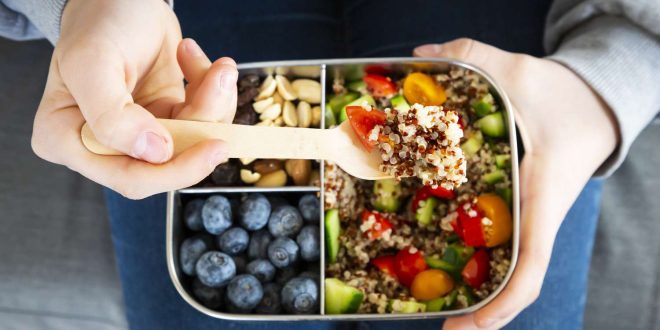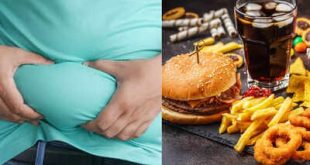Navigating the world of ADHD and childhood nutrition can feel overwhelming, right? As parents, we’re often looking for any edge we can get, and dietary interventions are a common area to explore when trying to help manage a child’s ADHD symptoms. This article aims to provide a balanced overview of the ADHD diet for kids, exploring both foods that may be beneficial and those that could potentially exacerbate symptoms. It’s not a magic bullet, of course, but every little bit helps, doesn’t it?
Understanding ADHD and its Potential Link to Diet
What is ADHD?
Attention-Deficit/Hyperactivity Disorder (ADHD) is a neurodevelopmental condition that usually pops up in childhood, continuing sometimes, if you’re lucky (or unlucky?), into adulthood. You’re probably familiar with the core symptoms: inattention (difficulty focusing, easily distracted), hyperactivity (excessive fidgeting, restlessness), and impulsivity (acting without thinking). It’s more than just a kid being a kid; it’s a persistent pattern of these behaviors that can really mess with daily life. Imagine trying to focus on homework with a brain that feels like a browser with 50 tabs open. Sounds exhausting, doesn’t it?
The Gut-Brain Connection
Okay, this is where things get interesting! The gut-brain axis is basically the communication network between your digestive system and your brain. Emerging research suggests that the gut microbiota (the trillions of bacteria living in your gut) can actually influence neurological conditions like ADHD. It’s like a second brain down there! An imbalance in gut bacteria might contribute to inflammation and affect neurotransmitter production, which in turn could impact ADHD symptoms. So, what you feed your gut might actually feed your brain, for better or for worse.
Does Diet Really Affect ADHD?
That’s the million-dollar question, isn’t it? The scientific evidence is still evolving, but the general consensus is that diet can play a role in managing ADHD symptoms, though it’s not a cure-all. Some studies suggest that certain dietary changes can lead to improvements in focus, attention, and behavior. However, it’s crucial to differentiate between anecdotal evidence (what your neighbor swears by) and clinical studies (actual science). What works for one child might not work for another, and that’s okay. It’s all about finding what’s right for your kid. It’s important to manage expectations and, most importantly, to consult with professionals. No one knows better than they do.
Helpful Foods for Children with ADHD
Foods Rich in Omega-3 Fatty Acids
Omega-3 fatty acids, especially EPA and DHA, are like brain food! They’re essential for brain health, cognitive function, and overall neurological development. Think of them as tiny construction workers, constantly repairing and building brain cells. Fatty fish like salmon, mackerel, and tuna are excellent sources. If your child isn’t a fan of fish (mine definitely isn’t!), consider omega-3 supplements or fortified foods. But as I said before, make sure you get them approved by a professional before trying any of them.
Protein-Packed Meals and Snacks
Protein is the unsung hero of stable blood sugar levels and improved focus. When blood sugar levels fluctuate wildly, it can lead to hyperactivity and irritability. Protein helps to keep things steady, providing a sustained release of energy. Lean meats, eggs, beans, nuts, and Greek yogurt are all fantastic sources of protein. Instead of sugary snacks, try offering your child a hard-boiled egg, a handful of almonds, or some chicken breast slices. The key is to make it easy and accessible.
Foods High in Iron and Zinc
Iron and zinc are essential minerals for brain development and function, and some research suggests they may play a role in ADHD. Iron deficiency, for instance, has been linked to attention deficits. Red meat, spinach, lentils, and pumpkin seeds are all good sources of iron and zinc. If you suspect your child might be deficient, talk to their pediatrician about getting their levels checked. Don’t start supplementing without professional advice, though!
Fruits and Vegetables: The Power of Antioxidants
Fruits and vegetables are packed with antioxidants, which protect brain cells from damage caused by free radicals. A colorful diet is the way to go! Berries, leafy greens, bell peppers, and broccoli are all excellent choices. Make it fun by creating colorful salads, smoothies, or even veggie skewers. You can even make them into fun shapes. My youngest thinks they’re the best thing since sliced bread.
Harmful Foods to Avoid with ADHD
Processed Foods and Artificial Additives
Processed foods are often loaded with artificial colors, flavors, preservatives, and other additives that may negatively impact ADHD symptoms. Some studies have linked these additives to increased hyperactivity and inattention. Read labels carefully and try to limit processed foods as much as possible. It’s like decluttering your pantry and your brain at the same time!
Sugary Drinks and Snacks
Sugary foods can lead to rapid spikes and crashes in blood sugar levels, which can worsen hyperactivity and impulsivity. It’s like riding a rollercoaster – exciting at first, but ultimately exhausting. Opt for natural sweeteners like fruit or honey in moderation, and prioritize whole, unprocessed foods over sugary drinks and snacks.
Caffeine: A Stimulant with Potential Drawbacks
Caffeine is a stimulant that can have both benefits and drawbacks for children with ADHD. While it may improve focus and attention in some cases, it can also lead to anxiety, insomnia, and irritability in others. Moderation is key. If you do allow your child to consume caffeine, be mindful of the potential side effects and avoid it close to bedtime.
Potential Food Sensitivities and Allergies
Underlying food sensitivities or allergies could potentially contribute to ADHD symptoms in some children. Common culprits include dairy, gluten, soy, and eggs. Consider working with a healthcare professional to explore the possibility of food sensitivities through elimination diets or allergy testing. It’s a bit of a detective game, but it could be worth it if you uncover something significant.
Implementing Dietary Changes: A Gradual Approach
Tips for Introducing New Foods
Introducing new foods to picky eaters can be a challenge, to put it mildly! Be patient, persistent, and positive. Start with small portions, offer new foods alongside familiar favorites, and involve your child in the process of meal planning and preparation. Don’t force them to eat anything they don’t want to, but encourage them to try at least a bite. Sometimes, it takes multiple exposures before a child accepts a new food. Sneaking vegetables into smoothies is a classic, right?
Reading Food Labels Carefully
Learning to decipher food labels is a crucial skill for any parent, especially when dealing with ADHD. Pay attention to serving sizes, added sugars, artificial additives, and other potentially harmful ingredients. Don’t be fooled by clever marketing tactics; read beyond the front of the package and focus on the ingredient list. The smaller the list, the better!
Working with a Healthcare Professional
Before making significant dietary changes for your child, it’s essential to consult with a pediatrician, registered dietitian, or other healthcare professional. They can help you assess your child’s individual needs, identify potential deficiencies or sensitivities, and develop a personalized dietary plan that’s safe and effective. It’s always better to be safe than sorry, right?
So, there you have it – a glimpse into the world of the ADHD diet for kids. Remember, it’s all about finding a balanced and personalized approach. Diet is just one piece of the puzzle when it comes to managing ADHD. Feel free to experiment (safely!), consult with professionals, and most importantly, be patient with yourself and your child. It is what it is, and we can only do our best. If you have any thoughts or experiences, don’t shy away from sharing them with the rest of us.
 Beverage Zone
Beverage Zone




